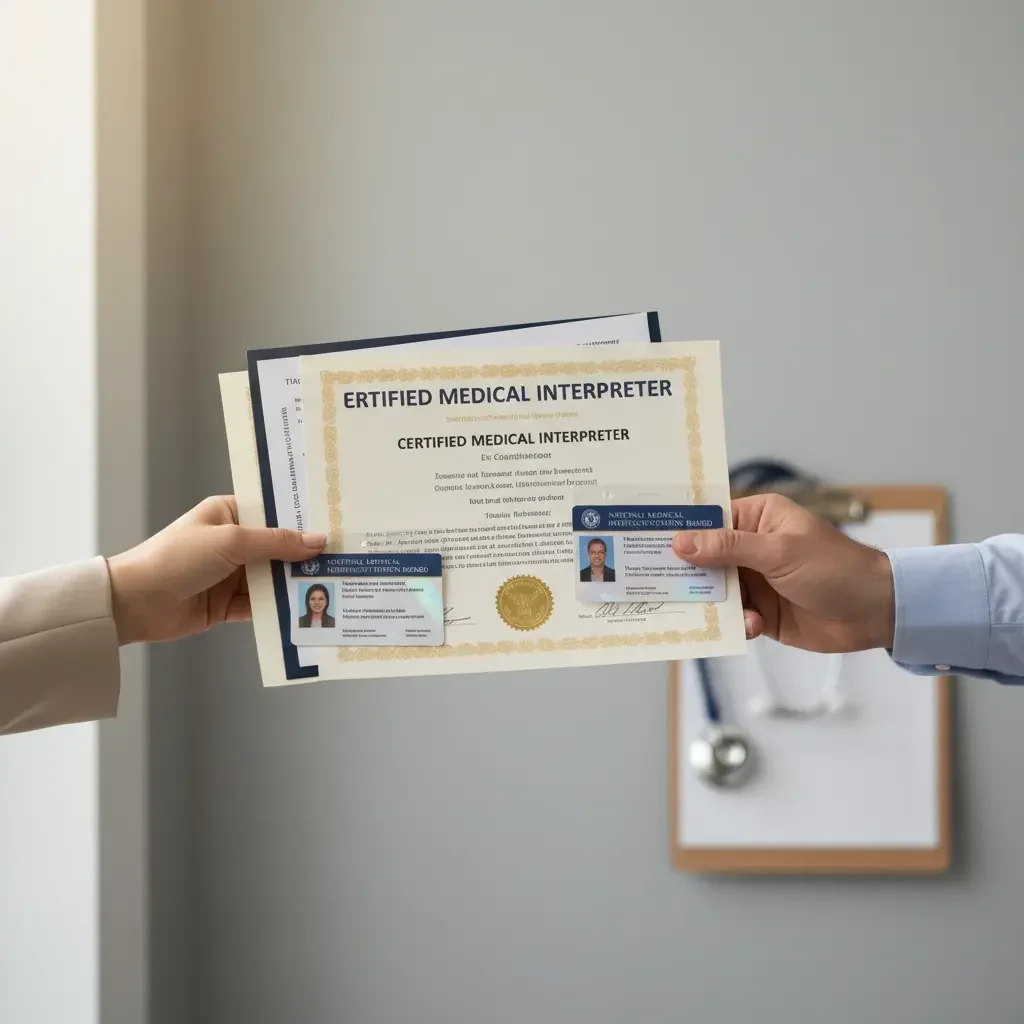Healthcare Interpreter Gap: 5 Steps How to Find Certified Language Services Near You (Easy Guide for Medical Practices)
The healthcare interpreter shortage is real, and it's affecting patient care across America. With over 67 million people in the U.S. speaking a language other than English at home, medical practices are scrambling to bridge communication gaps that can literally be life-or-death matters.
Finding qualified, certified medical interpreters isn't just about compliance: it's about providing equitable healthcare to all patients. But here's the problem: many practices don't know where to start or what to look for when hiring language services.
This guide breaks down exactly how to find certified healthcare interpreters in five straightforward steps. Whether you're a small family practice or a large medical center, these steps will help you connect with qualified professionals who can serve your diverse patient population effectively.
Step 1: Define Your Specific Language and Interpretation Needs
Before you start calling interpreter services, take a hard look at your actual needs. This isn't the time for guesswork: you need data.
Analyze Your Patient Demographics
Pull reports from your practice management system to identify:
Which languages your patients speak most frequently
Peak times when interpretation services are needed
Types of appointments that typically require interpreters (routine visits, procedures, emergency situations)
Whether you need in-person, phone, or video interpretation
Determine Service Types Required
Different situations call for different interpretation methods:
In-person interpreters work best for complex procedures, mental health sessions, and situations requiring high emotional sensitivity
Phone interpretation can handle routine appointments and urgent situations when travel time is a factor
Video remote interpreting (VRI) bridges the gap between in-person and phone services, offering visual cues without travel costs
Don't forget about document translation services. You'll likely need patient forms, discharge instructions, and consent forms translated into multiple languages
Step 2: Research and Identify Qualified Providers
This is where many practices make their first mistake: they go with the cheapest option without vetting qualifications. In healthcare, you get what you pay for, and poor interpretation can lead to medical errors, liability issues, and damaged patient relationships.
Look for National Certifications
Focus your search on providers with credentials from recognized certifying bodies:
Certification Commission for Healthcare Interpreters (CCHI): Offers CoreCHI™ and CHI™ certifications
National Board of Certification for Medical Interpreters (NBCMI): Provides CMI certification
International Medical Interpreters Association (IMIA): Offers additional credentialing
Certified interpreters have completed at least 40 hours of specialized medical training and passed rigorous exams covering interpreting skills, ethics, and medical terminology.
Research Local and Regional Providers
Start with a Google search for "certified medical interpreters [your city]" or "healthcare language services [your state]." Look for:
Local interpreter agencies with healthcare specialization
Hospital systems that might contract out their overflow interpreter needs
University programs that train medical interpreters (they often have referral networks)
Evaluate Online Platforms
Don't overlook technology-based solutions. Many reputable companies offer 24/7 phone and video interpretation services that can supplement your in-person interpreters.
Step 3: Conduct Detailed Interviews and Verify Qualifications
Once you've shortlisted potential providers, it's time to dig deeper. This step separates the professionals from the pretenders.
Ask the Right Questions
During your interviews, focus on these key areas:
Certification and Training:
What certifications do your interpreters hold?
How many hours of medical interpreter training have they completed?
Do they participate in continuing education?
Experience and Specialization:
How long have they been interpreting in healthcare settings?
Do they have experience with your medical specialty?
Can they handle complex medical terminology in both languages?
Availability and Reliability:
What are their response times for urgent requests?
Do they have backup interpreters available?
How do they handle last-minute cancellations?
Professional Standards:
Are they familiar with HIPAA requirements?
Do they follow professional codes of ethics?
How do they handle conflicts of interest?
Verify Credentials Independently
Don't just take their word for it. Check certifications directly with the certifying bodies. Most certification organizations have online verification systems where you can confirm an interpreter's credentials.
Step 4: Request References and Review Work Samples
This step is crucial but often skipped. References give you real insight into how these interpreters perform under pressure and in actual healthcare settings.
Contact Healthcare References
Ask for contacts at other medical practices, hospitals, or clinics where the interpreter has worked. When you call references, ask specific questions:
How reliable is this interpreter?
Have there been any communication issues or complaints?
Would you use their services again?
How do patients respond to working with this interpreter?
Observe a Sample Session
If possible, arrange to observe the interpreter during a non-confidential interaction or ask them to demonstrate their interpreting skills in a mock scenario. This gives you firsthand insight into their:
Professional demeanor
Language fluency in both directions
Ability to handle medical terminology
Cultural sensitivity
Review Documentation and Processes
For language service providers, review their:
Interpreter vetting process
Quality assurance procedures
Complaint resolution protocols
Privacy policies and HIPAA compliance measures
Step 5: Establish Clear Expectations and Make Your Selection
You've done your homework: now it's time to make a decision and set everyone up for success.
Create Service Level Agreements
Whether you're working with individual interpreters or a language service provider, establish clear expectations around:
Response times for different types of requests (routine vs. emergency)
Cancellation policies for both parties
Billing procedures and payment terms
Communication protocols for scheduling and changes
Quality standards and performance metrics
Set Up Backup Plans
Even the best interpreters get sick or have emergencies. Make sure you have:
Multiple interpreters for your most common languages
Access to phone or video interpretation for urgent situations
Clear escalation procedures when your primary interpreter isn't available
Plan for Onboarding
Once you've selected your interpreters, invest time in proper onboarding:
Tour your facility and introduce them to key staff
Explain your patient population's cultural considerations
Establish preferred communication channels for scheduling
Additional Considerations for Long-Term Success
Budget for Quality
Certified medical interpreters cost more than bilingual staff members or uncertified interpreters, but they're worth the investment. Poor interpretation can lead to misdiagnoses, medication errors, and legal liability that far exceed the cost savings.
Consider Hybrid Solutions
Many successful practices use a combination of services:
Contract interpreters for scheduled appointments
Phone/video services for walk-ins and emergencies
Staff interpreters for high-volume languages
Build Relationships
Language services work best when they're built on relationships, not just transactions. Treat your interpreters as part of your healthcare team. Provide feedback, include them in relevant staff meetings, and recognize their contributions to patient care.
Stay Compliant
Remember that providing language services isn't just good practice: it's required by law. Title VI of the Civil Rights Act and the Affordable Care Act require healthcare providers who receive federal funding to provide language access services to LEP patients.
Moving Forward with Confidence
Finding certified healthcare interpreters doesn't have to be overwhelming. By following these five steps: defining your needs, researching qualified providers, conducting thorough interviews, checking references, and establishing clear expectations: you'll build a language services program that serves your patients and protects your practice.
The investment in quality interpretation pays dividends in patient satisfaction, clinical outcomes, and risk management. Don't let language barriers prevent you from providing excellent healthcare to all patients in your community.
Ready to get started? Contact our team to discuss your specific healthcare interpretation needs and learn how professional language services can enhance your patient care.




